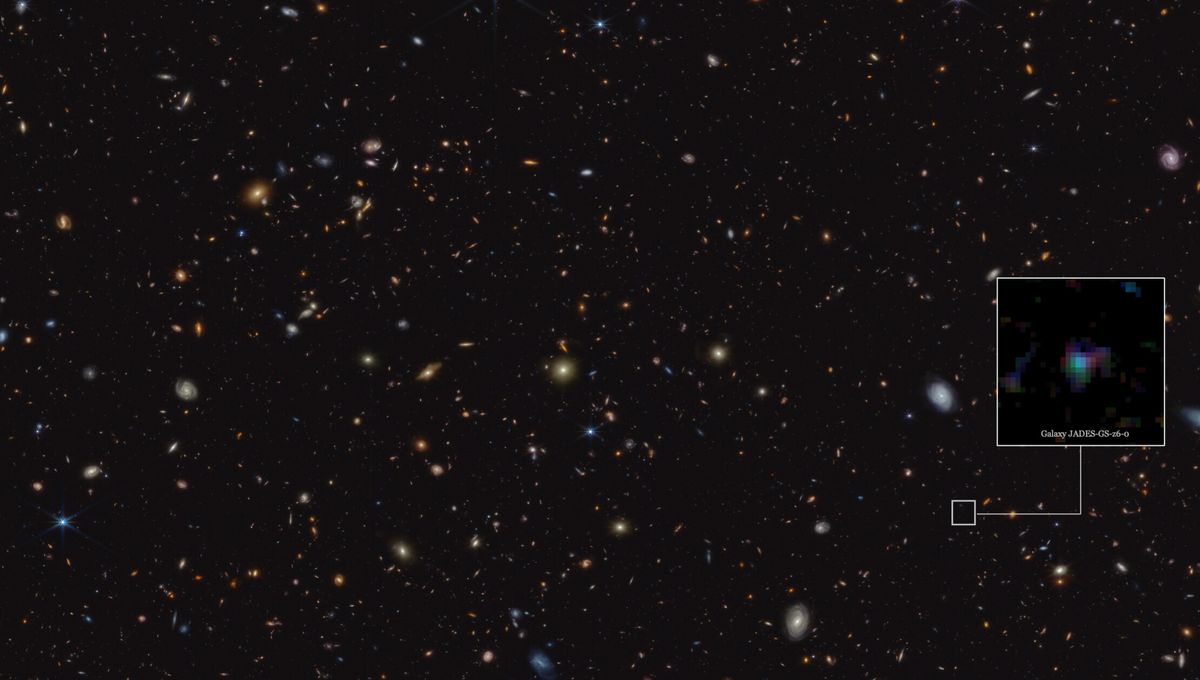
Carbon-rich dust grains have been detected in the first billion years of the cosmos for the first time. The discovery is another important insight into what the universe was like during its infancy, although it is currently not clear what kind of molecule the researchers are looking at.
In the recent universe, up to roughly 10 billion light-years away, this carbon-rich dust is often made of complex molecules called polycyclic aromatic hydrocarbons (PAHs), and the rest is small graphite or diamond-like grains made mostly of pure carbon.
PAHs are expected to take a long time, hundreds of million years, to accumulate. So the team believes the signal is more likely related to either graphite or diamond grains, rather than PAHs. Regardless of the composition, the team argues that this is the earliest and most distant direct signature of these particular types of carbon-rich dust grains.
They are known to absorb a specific wavelength. “Carbon-rich dust grains can be particularly efficient at absorbing ultraviolet light with a wavelength around 217.5 nanometres, which for the first time we have directly observed in the spectra of very early galaxies,” lead author Joris Witstok, of the University of Cambridge, said in a statement.
The 217.5-nanometer absorption is like the calling card for these dust grains, and it has been seen in our galaxy and in galaxies a lot further away – but not as far as the one spotted by JWST in this work. The signature in this case is not exactly at 217.5 nanometers, but is a bit off: 226.3 nanometers. This might be a small error in the measurement or it could indicate the mix ratio was slightly different back then.
“This slight shift in wavelength of where the absorption is strongest suggests we may be seeing a different mix of grains, for example graphite- or diamond-like grains,” adds Witstok. “This could also potentially be produced on short timescales by Wolf-Rayet stars or supernova ejecta.”
The team will undertake further analysis to better understand these observations in themselves and also to understand them in the context of the evolution of matter in galaxies. These carbon structures eventually make their way into planets. That’s where we come from.
“We are planning to work further with theorists who model dust production and growth in galaxies,” shares team member Irene Shivaei of the University of Arizona/Centro de Astrobiología (CAB). “This will shed light on the origin of dust and heavy elements in the early Universe.”
The study is published in Nature.
Source Link: JWST Might Have Seen Cosmic Diamonds In The Early Universe